RetailK
RetailK —
Kiosk Interface
Introducing the first kiosk that eliminates the tiresome change room experience at brick-and-mortar clothing retailers.
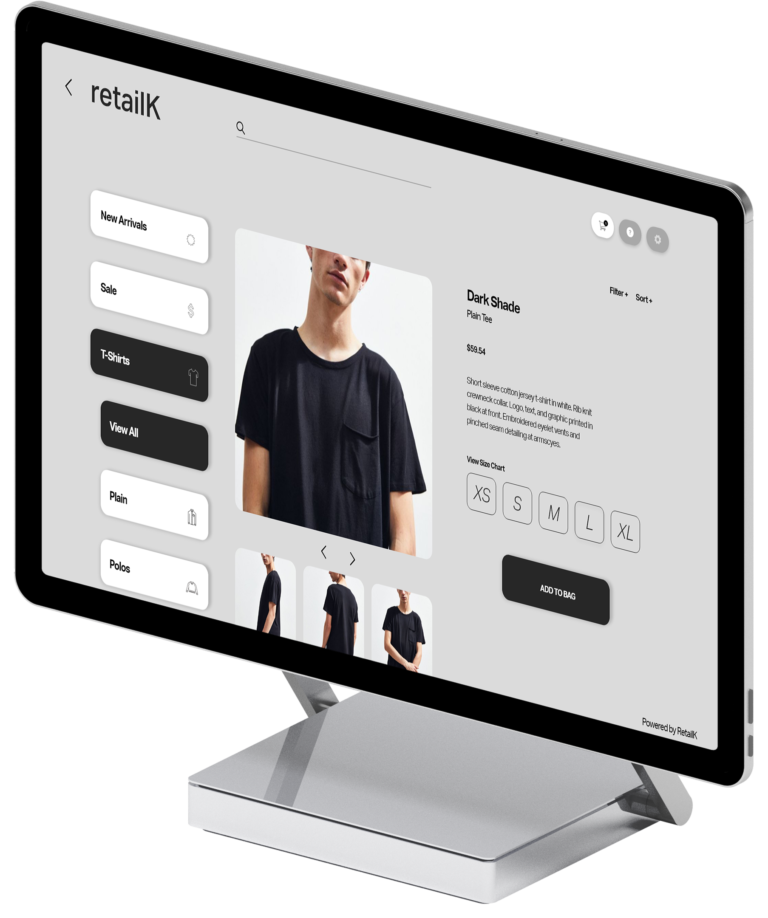
Problem Statement
Proposed Solution
Roles
- User Research
- Visual Design
- UX Research
- Personas
- Prototyping
Deliverables
- User Surveys
- Personas
- User Stories
- User Flows
- MVP
Team
- Abdul Renaldy-Pierre (UI Design)
- Nina Paul (UX Designer)

Competitive Analysis

Understanding Users
Statistics show that 9/10 shoppers are unsatisfied with their fitting room experience. In conjunction with our contextual research we had conducted, this statistic was a clue to how we could flip the negative fitting room experience on its end.
We designed RetailK with two targets in mind: Established Professionals and Young Professionals. These are clients between the ages of 25 and 66 who are independent, resourceful and value their freedom. Another target market in our view is the Upcoming Professional – those between 16 and 24 who have never known a world without internet, and are familiar with rapid-growing technologies.
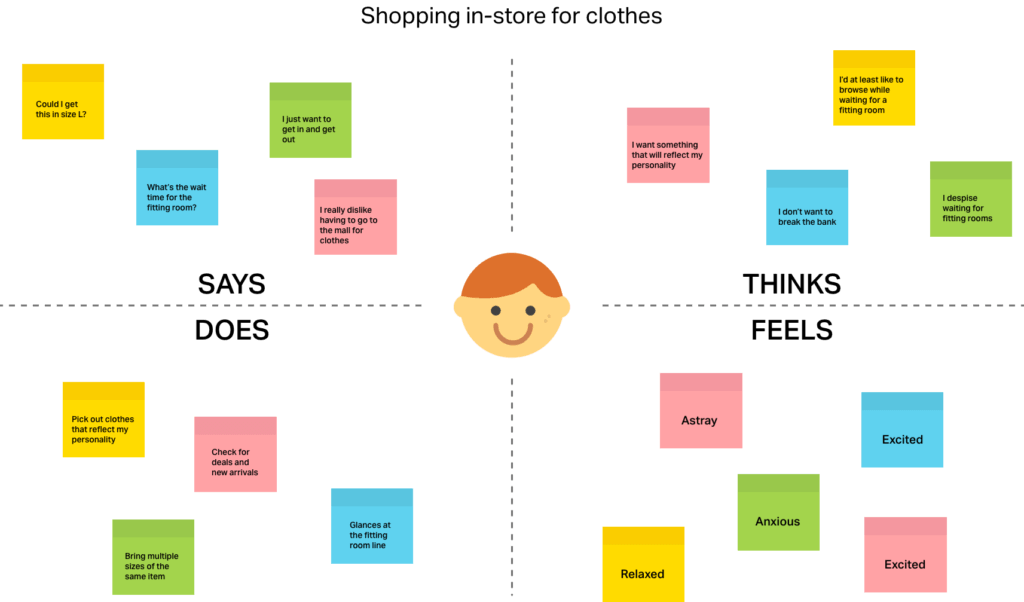

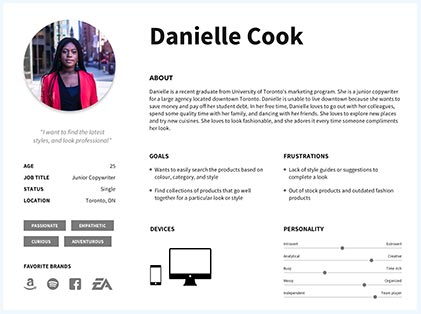
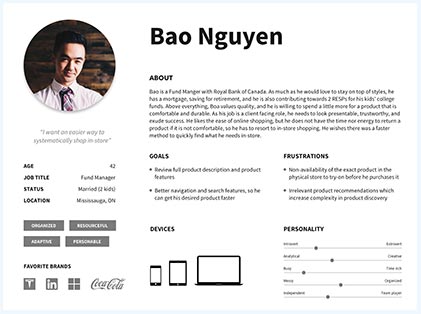
The Scope
- The kiosk will have an in-built product scanner for customers to review product availability and size/styles
- Users will have the option to browse an online catalog
- The kiosk will support multiple languages
- Users will have access to their session’s browsing history
- Users can sort and filter by size, colour, features and newest additions
- If the product is available in-store, users will have the option to request to try-on the product from the kiosk
- The user will have the option to request multiple sizes of the same product to try on
- If the merchandise is out-of-stock, the customer will have the option to find the closest store that carries the product or the option to ship the product to their residence, office, or local store for pickup
- If the customer calls for assistance and a representative has accepted to help, the kiosk will display an image of the representative and their name
- If the customer is unsatisfied after trying on the product, they will have the option of either requesting assistance within their room or placing a request for an additional size or style of a specific product

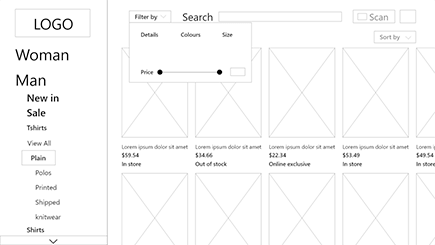
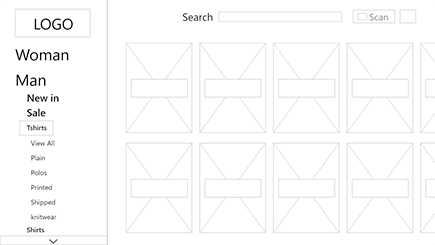
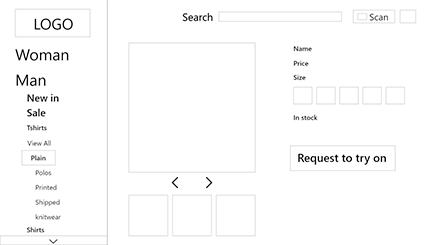
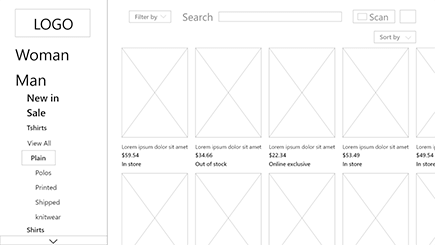
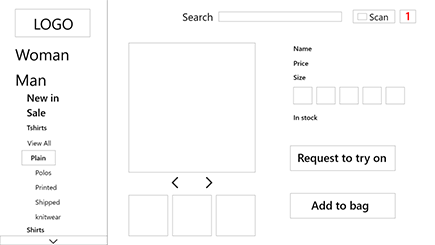
Usability Testing
- Imagine you’ve walked into a department store, and you’ve picked 2 jackets in a Medium size that you would like to try. Your task is to scan both the items, after scanning each item you would deposit them into a box next to the kiosk, and then provide your contact information for the system to notify you when the trial room has been prepared.
- You have a shirt in mind that you saw on the department store website and want to come in and try it for yourself, how would you go about using the kiosk to reserve a changing room in order to try it on?
- You get to the kiosk and notice someone had been using it, how do you reset the kiosk back to the splash screen?
Task 1
Task 2
Task 3
Findings
After our usability test, thanks to our participants, our team was able to identify six issues with the kiosk. Each issue was ranked with severity. Whether it was a low or high-priority issue, we made sure to tackle these issues. Here are the six issues as follows:
- 'Fitting Room' is a more-common term in Canada than 'Trial Room'
- On the Fitting Room review page, users with accessibility needs should have options
- Visual and textual guidance to help the user move screen tp screen, confirmations are also required.
- Often customers will leave the kiosk on after they're finished. It was unclear where the user should go to exit or reset the session
- On the confirmation screen, users need to know how long they're waiting, and their place in queue
- The shopping cart only shows the price of the itme itself, but does not show the total
Bringing everything together
To wrap everything up, we compiled all of our research findings and steps into a report.
Iterating each time on findings with the over-arching research questions in mind is a fundamental way to create a great product for users. When it came to user testing, we found that most of the participants thought they were using a fully functional kiosk.
That, along with other suggestions can be found in the report that could be implemented given another round of testing.
